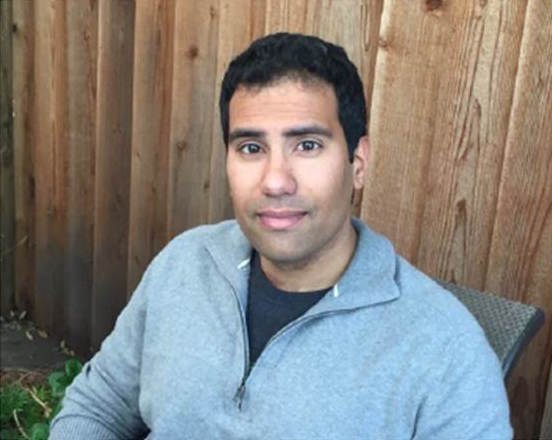CHARACTERIZING THE MECHANISMS OF APOPTOTIC RESISTANCE IN GBM
Glioblastoma (GBM), the most aggressive and deadly form of brain cancer, shows a poor clinical response to all treatments, but it is unknown whether resistance to apoptosis contributes to the lethality of this disease. The ability of a cell to undergo intrinsic apoptosis or mitochondrial programmed cell death is governed by the interactions of the BCL-2 family of proteins. It is well known that cancers manipulate these proteins to become more resistant to cell death by increasing the expression of anti-apoptotic proteins or ‘blocks’ (BCL-2, BCL-XL and MCL-1, etc) which bind and sequester pro-apoptotic BH3 only proteins (BID, BIM, PUMA) and effector proteins (BAK and BAX) to prevent cell death. We have embarked on an effort to comprehensively characterize the molecular apoptotic blocks that are present in GBM, their relationship to the presence of specific genetic alterations, and the therapeutic vulnerabilities that may exist as a result of these connections.
To investigate these blocks, we utilize next generation sequencing in combination with a functional assay called ‘BH3 profiling’ – via collaborations with Dr. Anthony Letai (Dana Farber) - that enables one to measure the cumulative interaction and dependencies of these proteins in GBM. We have been performing this functional profiling across the laboratory’s extensive molecularly diverse panel of patient-derived GBM neurosphere cultures, on GliomaPDOX models and on tumor samples directly resected from patients. Collectively, we anticipate these studies will provide, for the first time, a comprehensive portrait of the anti-apoptotic machinery responsible for resistance to cell death in one of the most refractory human tumors.
Team Members and Collaborators
UNDERSTANDING METABOLIC PLASTICITY IN GLIOBLASTOMA: IMPACT OF MOLECULAR HETEROGENEITY AND TUMOR MICROENVIRONMENT
Altered metabolism is a hallmark of cancer and facilitates the increased energetic demands of the rapidly proliferating cancer cell. Multiple factors influence the dynamic regulation of cancer cell metabolism. Oncogenic signaling has been shown to play a role in regulating metabolism in multiple cancer types including glioblastoma (GBM). GBM is characterized by molecular heterogeneity both between patients and within a single tumor. Addressing this heterogeneity is critical to identifying novel metabolic dependencies and drivers of therapeutic resistance. Additionally, tumor microenvironmental factors such as oxygen and nutrient availability, and neuronal and infiltrating immune cell interactions have also been shown to play a role in shaping metabolic phenotypes. Therefore, it is necessary to approach our investigation of metabolic alteration by using in vivo approaches which preserve this unique brain tumor microenvironment. In order to investigate the effect of molecular heterogeneity and tumor microenvironment on metabolic reprogramming in glioblastoma, we are using primary, patient-derived GBM tumor samples to generate our novel, patient-derived orthotopic xenografts (PDOX) and matched cultured neurospheres. We are currently applying this approach to gain a comprehensive understanding of lipid metabolism in GBM, which is a key component of cellular metabolism and signaling and is often altered in cancer cells. Additionally, we are investigating the cellular bioenergetics of glioblastoma cells. We are interested in the metabolic plasticity of cancer cells and elucidating the factors that drive this flexibility. We are using isotopically-labeled nutrient infusion systems in glioblastoma patients and their matched PDOX models to investigate nutrient flux and utilization in a system which preserves the unique tumor environment. Our goal is to assess the effect of both tumor microenvironment as well as genomic and transcriptomic heterogeneity on metabolic alteration in glioblastoma. We aim to discover novel modulators of metabolic alteration and ultimately identify therapeutic cancer cell dependencies.
Team Members and Collaborators
EXPLORING ONCOGENIC PATHWAY CROSSTALK WITH ANTI-TUMOR IMMUNITY IN GLIOBLASTOMA
Immunotherapy is revolutionizing cancer care, yet glioblastoma (GBM) has not seen the same degree of clinical benefit compared to other malignancies. This disparity is likely due to multiple factors unique to the brain microenvironment including immune privilege relative to other organs and tumor exerted immunosuppressive signaling. For example, GBM cells can influence macrophage polarization, T-regulatory cell recruitment, and dendritic cell activation as well as express checkpoint molecules such as PD-L1 to impair effector T-cell response. This ultimately results in a suppressed anti-tumor immune response and failure to clear the disease. To better understand the mechanisms by which GBM cells exert these immunosuppressive effects we are studying the cross-talk between intrinsic oncogenic signaling and the immune microenvironment using syngeneic orthotopic mouse glioma models, molecularly diverse patient derived gliomasphere lines, and primary patient samples. Our preliminary findings suggest that distinct oncogenic signaling pathways shape the milieu of the GBM immune microenvironment. A better understanding of this phenomenon will shed light on the distinct immune evasion strategies present in GBM and has the potential to therapeutically enhance patient anti-tumor immune response.
Team Members and Collaborators




















